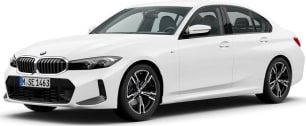F-150s are imported to Australia from the USA as left-hand-drive vehicles and reengineered to right-hand-drive by Melbourne-based RMA Automotive, at the company’s production facility.
The utes undergo an exhaustive transformation including changes to steering, driver displays, air con, as well as software upgrades, to mention a few, all aimed at making them capable of excelling in Aussie conditions.
And RMA Automotive has done an impressive job.
The F-150 is, by its very nature, a big vehicle with a steel ladder-frame chassis and a lengthy wheelbase, but it suits Aussie conditions, especially with Aussie-tuned steering, great on-road ride and handling and that 4500kg towing capability built into it.
It's well-controlled with a solid, planted feel on sealed surfaces, the steering has a nice weight to it in all conditions, acceleration is smooth (and punchy when needed) and the 10-speed auto offers clever management of this big vehicle.
It’s also very comfortable and quiet in the cabin. You can just barely register the low-level rumble of the twin-turbo V6 as you truck along stretches of highway and rural backroads.
All in all, on-road this is an almost perfect open-road touring vehicle. The bonus is, as a Lariat driver, you have access to a whole suite of driver-assist tech which specifically includes stuff geared towards making the task of towing safer, more controlled and, as a result, more enjoyable than it otherwise may be.
However, when you get this big ute off road, you quickly discover it has limitations. Those limitations don’t come close to ruining the F-150’s potential as an adventure machine, but this is a substantial vehicle so it has to be driven with real consideration, real care, and you have to know the off-road parameters in which this ute works best.
If you drive anything more severe than light-to-medium-duty off-roading you're risking damage to this ute’s side steps or underbody.
The F-150’s size is not a factor when the tracks are nice and wide, but when the tracks become narrower, more treed-in, it becomes more difficult to navigate through those routes.
The Lariat’s suspension – IFS (twin wishbone) with coil springs at the front and live axle on leaf springs at the rear – is well set up to soak up lumps and bumps on sealed surfaces and even on gravel tracks, but it is less capable of doing the same job during low-range 4WDing.
It becomes very bouncy, when you’d be excused for expecting that longer wheelbase would offer a bit more stability and control through shallow to moderate ruts, but it really is a wild ride.
Beyond that, though, visibility is great, the driving position is commanding, steering at low speeds is well-weighted and precise and throttle response is impressive.
While there’s little to nit-pick in terms of the four-wheel drive system onboard this ute, the traction control system is somewhat clunky.
When the terrain becomes more challenging, that off-road traction control system just seems to whirr and click and clunk away with lacklustre application – it’s not exactly smooth or seamless.
The F-150 has the kind of off-road angles you’d expect for a vehicle this large: approach angle is listed as 24 degrees, departure angle is 26.3 and the ramp-over is 19 degrees.
Ground clearance is listed as 225mm and wading depth is 600mm.
The tyres – Pirelli Scorpion ATR all-terrain light truck tyres (275/60R20) – aren’t that good for off-roading, either, even though they’re marketed as all-season tyres.
Bigger tyres and an aftermarket suspension lift would go some of the way to help sort out the F-150’s issues with less-than-ideal rubber as well as poor ground clearance and off-road angles.
For such a big ute, payload is an underwhelming 710kg; for reference, the Ram 1500 (878kg) and Chevrolet Silverado (757kg) offer more, and even mainstream dual-cab utes, such as the Ford Ranger (966kg (kerb weight)/1010kg (min kerb weight) offer better payloads.
Towing capacity is 750kg (unbraked) and a noteworthy 4500kg (braked). GVM is 3265kg, and GCM is 7765kg.

